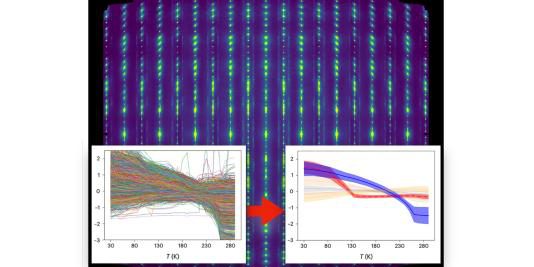A dish made of crystal and a dish made of glass might look similar from the outside, but internally, their structures differ significantly. Crystals consist of perfectly ordered, repeating patterns of atoms, while glasses display a more disordered, fluid-like structure.
For decades, scientists have been puzzled by glasses — how they form, what they are, and why they behave the way they do. Glasses exist right at the intersection of liquid and solid, which makes their nature elusive to traditional ways of classifying and understanding material behavior.
Even more perplexing and elusive is a phase of matter called a Bragg glass. It displays both the ordered properties of crystals and the disordered nature of glasses at the same time. Scientists at the U.S. Department of Energy’s (DOE’s) Argonne National Laboratory, along with collaborators at Cornell University and Stanford University, have recently found experimental evidence of a Bragg glass phase present in a material.


